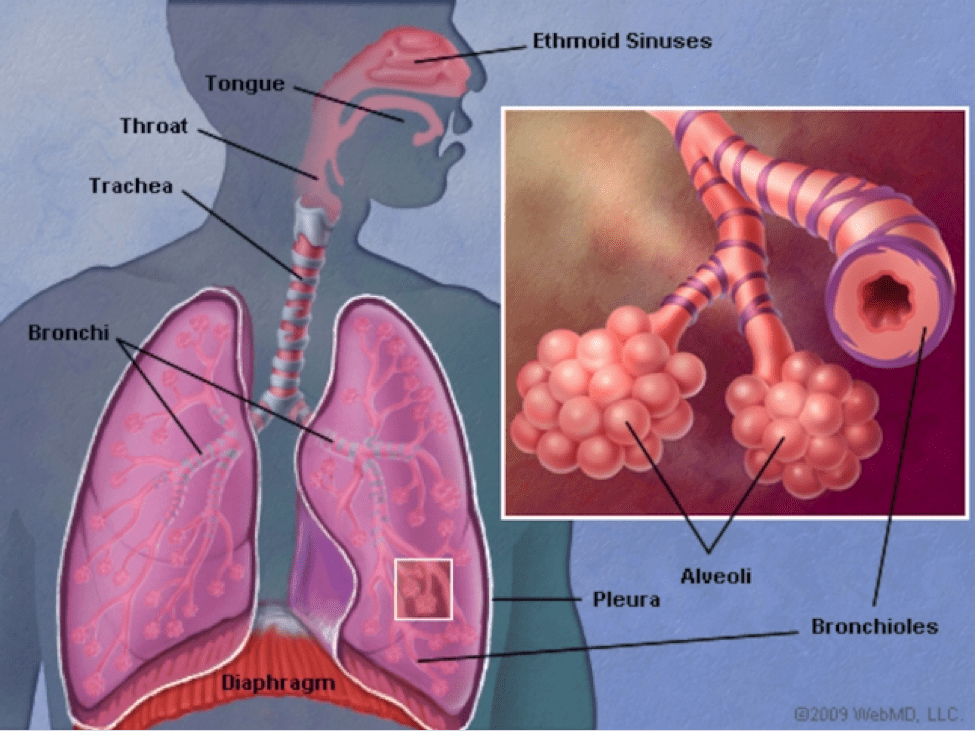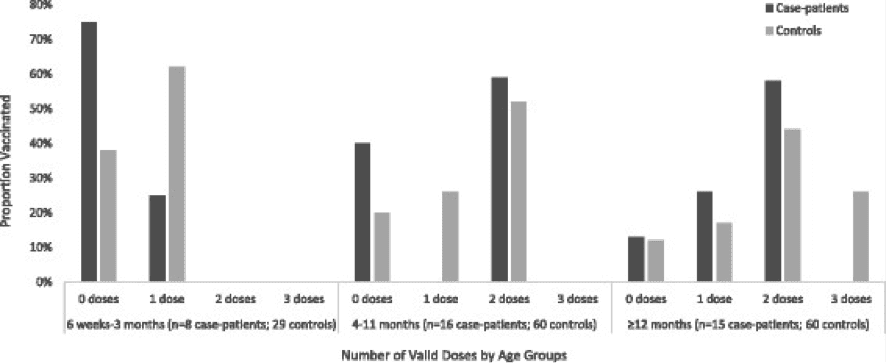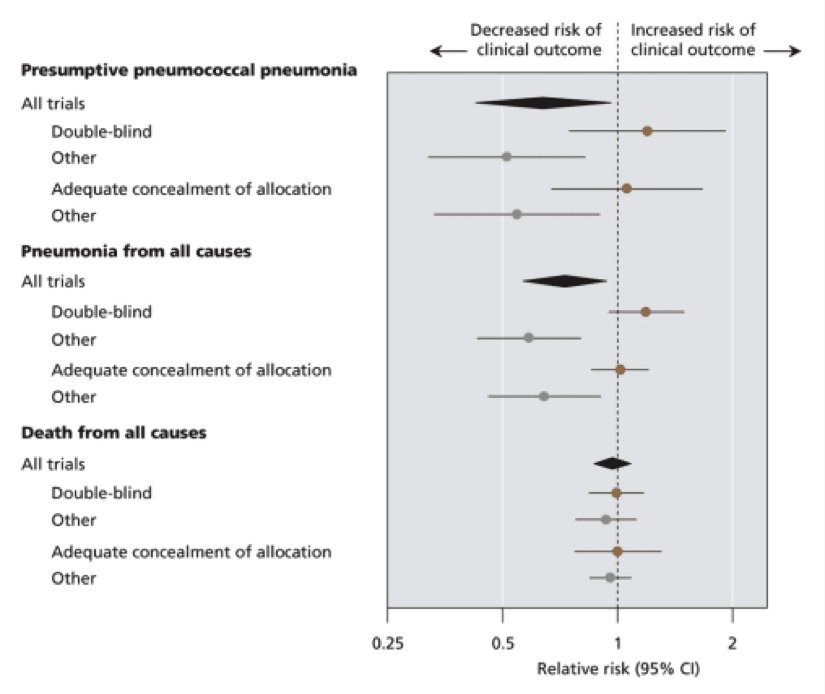The Pneumonia Shot Dangers: What You Should Know
“BUT HE HAD THE PNEUMONIA SHOT, HE CAN’T HAVE PNEUMONIA!” said the distraught daughter of an elderly man in a nursing home with a severe case of pneumonia. She had assumed that if a person gets the pneumonia shot they won’t get pneumonia. This is certainly far from the truth, as there are many causes of pneumonia.
Pneumonia means there is fluid, or inflammation, in the air sacs of the lungs called “alveoli.” Blood picks up oxygen in the lungs to carry it to the rest of the body. But if there is fluid in the air sacs, the blood will pass by and not pick up any life-giving oxygen, thereby failing to deliver available energy to the whole body. Since we breath the outside air into our lungs, there is a great possibility of inhaling something that can cause a reaction and fill the lungs with fluid, causing pneumonia.
There are over a hundred different types of bacteria and viruses that can cause pneumonia, but only a few of them account for most of the cases. Published data tell us that Streptococcus pneumoniae, the bacteria of the “pneumonia shot,” accounts for between 5% and 50% of cases of pneumonia acquired outside of a hospital or nursing home.[1]
The Pneumococcal Vaccine
The “pneumonia shot” is a vaccine against only one type of organism, Streptococcus pneumoniae. The Streptococcus pneumoniae (S. pneumoniae) bacteria was first found in the lungs, so became the name of the vaccine. The S. Pneumoniaeis a normal part of the bacteria that live with us. About 10% of adults carry S. Pneumoniae, and 40% of children have it. But S. Pneumoniae can cause disease anywhere in the body, including meningitis, skin infections, ear infections, blood infections (sepsis), and so forth.
Misunderstood
There are 90 different types of the bacteria S. pneumoniae. One of the vaccines, PCV13, has 13 forms, and the other, PPSV23, has 23 different types of S. pneumoniae bacteria. If you get both vaccines, you are supposed to be protected from 24 of the 90 types of disease. In other words, even if the vaccine is 100% effective it only offers protection from 27% of the types of this one organism.
This is why the “Pneumonia Shot” is the most misunderstood vaccine in the world. It isn’t proven to prevent pneumonia, even against the one organism it’s supposed to stop.
Children
Immunity induced by PCV7 and/or PPV23 immunization in infancy does not exceed that of naturally acquired immunity in 3-5-year-old children living in a highly endemic area.
Children are most likely to get disease from the pneumococcal bacteria because they haven’t yet been exposed to it. A large study in Papua New Guinea tested the levels of antibody in the children 3 to 5 years after they received the pneumococcal vaccine as infants:[2] Their report concludes:
In other words,
- The vaccine had no effect at all on the immunity of the children where there was a lot of disease from this organism.
- Those who didn’t get the vaccine were still exposed to pneumoniae and acquired their own immunity.
It appears that in areas where there is less exposure to S. pneumoniae,the vaccine increases immunity against the specific types.[3] In the U.S. only around half of vaccinated children carry the organism in their throats.[4]
PCV-13
One of the pneumococcal vaccines is a “conjugated” vaccine. This means a molecule from the outer coat of the bacteria is attached to a tetanus toxoid, like what is used for the tetanus vaccine. This seems to be somewhat effective in newborns but may make the problem worse as children age. It appears that those who have the vaccine are more likely to get the illness later.
The problem with vaccine research:
Nearly all published research on vaccines is done by the marketing departments of the companies who make the vaccines. For example, a positive study on the effectiveness of the PCV13 vaccine in older adults[5] ends with the following:
Acknowledgments. Editorial support was provided by Susan DeRocco-Keller at Complete Healthcare Communications, LLC, and was funded by Pfizer.
Financial support. This study was sponsored by Pfizer Inc.
Potential conflicts of interest. J. M. M., R. E. I., H. L. S., D. L. S., B. D. G., L. J., and Q. J. are employees and shareholders of Pfizer Inc. R. M. C., P. P., T. L. W., W. A. M., and J. A. R. received funding support from Pfizer for the conduct of this study. The sponsor was involved with study concept and design, conduct, analysis, and interpretation of the data; drafting of the manuscript; and the decision to submit the manuscript for publication. All authors have submitted the ICMJE Form for Disclosure of Potential Conflicts of Interest. Conflicts that the editors consider relevant to the content of the manuscript have been disclosed.
When the concept, design, analysis, editing, and publishing of a study are controlled by the company, and the researchers are all employees and/or shareholders in the company that makes the vaccines, you can be sure it is going to be positive. In other words, like most research today, this study is more marketing and less science. There are hundreds of ways to manipulate statistics, especially in medicine.
When commenting on how statistics are used to bolster weak arguments, Mark Twain attributed the following to the British Prime Minister Benjamin Disraeli:
“There are three kinds of lies: lies, damned lies, and statistics.”
For example:
The authors say the graph above proves that the vaccine works.[6]
- The black lines are those who had pneumococcal disease.
- The gray lines are those who had no disease. This is called a “CASE-CONTROL study” where they take some cases of a disease out of a population, and then compare them to random people who didn’t have the disease.
This CASE-CONTROL STUDY is a poor because the comparison doesn’t consider the fact that very few people get the disease. Since pneumococcal disease is always less than 0.01% in a population, it means 0% are expected to get the disease, making the control group irrelevant. Nobody is expected to get the disease, vaccine or not, so you can’t use that as a control for the disease.
The research your doctor reads is filled with such lies (or are they damned lies?).
Now, take the same graph and ignore the useless control group – look only at the black lines. Let me explain.
- If an infant <3 months has one dose of PCV13 they might have a lower risk of getting pneumococcal disease. (The number in this case was only 8 so we really can’t draw any conclusions, however, other studies indicate that this may be true.)
- Interestingly, at 4 months to a year, more children who had the disease were vaccinated.
- In children over a year of age, those who had no vaccines had the lowest risk.
- One dose of vaccine doubled their risk
- Two doses tripled the risk over a single dose.
- This is the same pattern we see with the other vaccine, called PPSV23.
PPSV-23
The second pneumococcal vaccine is a polysaccharide vaccine which is made from the outer “shell” of the bacteria. The polysaccharide vaccine is less stimulating to the immune system than the conjugated vaccine. Many large trials have been done to assess the effectiveness of this vaccine. The following study is called a “Meta-Analysis” where multiple studies are taken together so any one study that may not be representative doesn’t confound the truth:[7]
| Figure 3: Summary plot of meta-analyses of clinical trials of pneumococcal polysaccharide vaccines. Brown circles show summary estimates from trials of higher methodologic quality. |
This tells graphs tell us:
- The “high quality” studies show more disease in those who get the vaccine.
- The “low quality” studies show less illness.
For the PPSV23 vaccine, this poses a problem. ALL the “high quality” studies indicate that we’re more likely to get pneumonia if we get the vaccine. Why would this be? There are many confounding factors, so it doesn’t necessarily mean the vaccine causes disease. All we know is that those who got the vaccine are more likely to get pneumonia in those studies. Perhaps they had more risks.
For example, one of the best trials was done only on HIV infected adults in Uganda. Those vaccinated were significantly more likely to have pneumococcal disease and pneumonia.[8] First of all, they have a suppressed immune system, which may prevent a normal response to the vaccine. Second, they are exposed to much more pneumococcus than in other areas of the world.
Because of these issues we can’t conclude from the research that the vaccine prevents pneumonia, even pneumococcal pneumonia. Nor can we say that the vaccine gives a lower risk of dying of any disease. It likely just doesn’t do anything. So, the benefits of getting this vaccine as an adult are questionable. Maybe it decreases your chance of getting the illness by up to 25%, or maybe it causes 25% more pneumonia – we can’t say. What we now need to know now are the risks.
Reactions to the vaccine
There have been 2039 reports of reactions and ineffectiveness due to the pneumonia vaccine to the Vaccine Adverse Event Reporting System (VAERS). Most of these are in children, probably because most of the shots are given to children.[9] Most are minor, such as redness at the vaccine site. This vaccine doesn’t seem to have a lot of reactions, nor cause any permanent injury.
The problem with the system is that we don’t know if the adverse event was really caused by the vaccine – or was it something else that was co-incidental? No matter where you go for information you can count on bias. Those who want to stop mandatory vaccination will emphasize the risks and downplay the benefits, while those who sell the vaccine will do the opposite.
Bottom Line:
If you don’t have a spleen or if you have SICKLE-CELL disease you should get a conjugate vaccine, PCV13.
The PPSV23 vaccine may not prevent pneumonia and may increase the risk of pneumonia – immunity wanes quickly.
The PCV13 vaccine has no good evidence of benefit in adults.
Infants might benefit from the PCV13 vaccine which may increase the risk of disease as they get older. Children over 1 probably don’t benefit, and may have increased risk, from the vaccine.



























